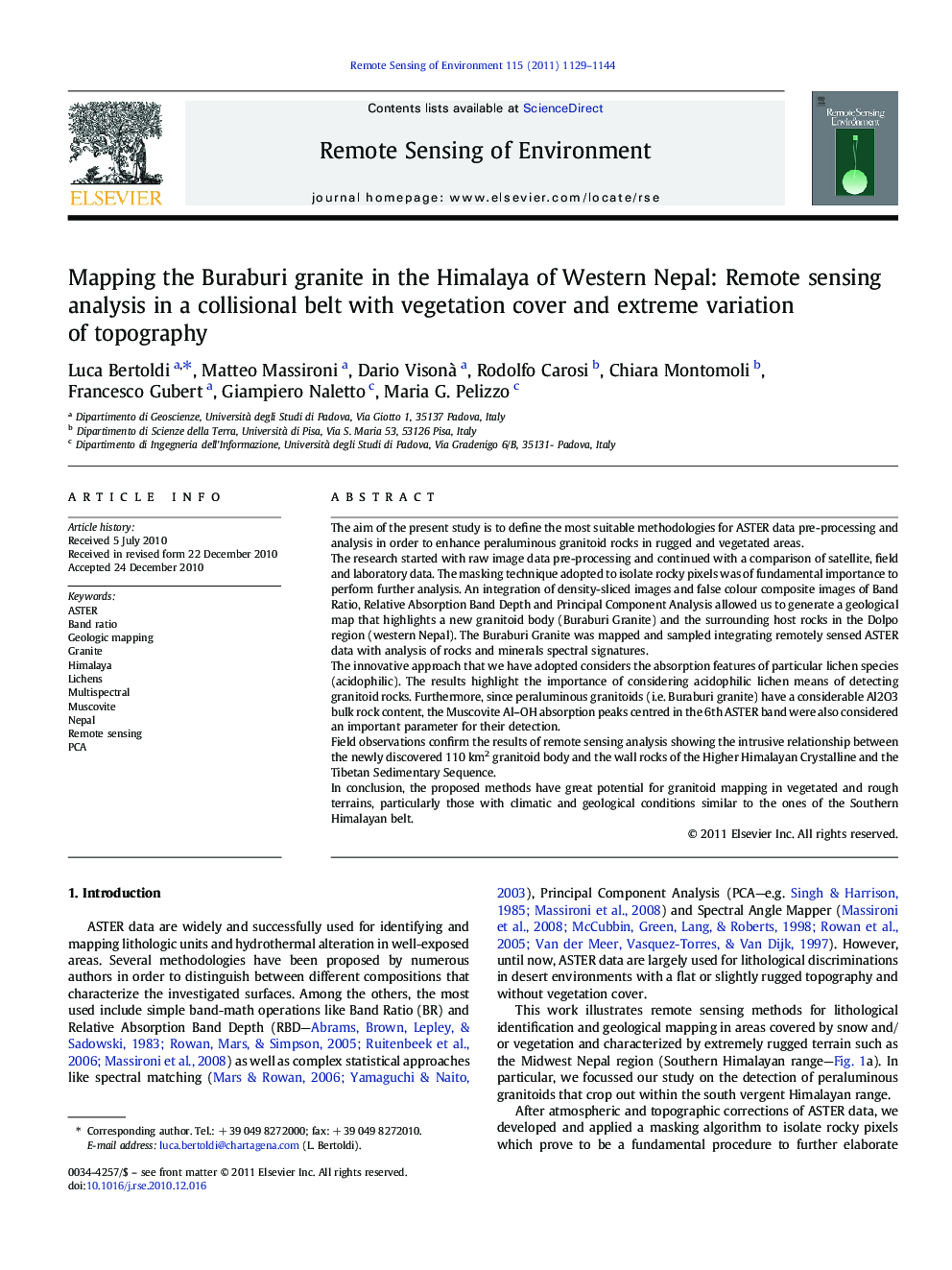| Article ID | Journal | Published Year | Pages | File Type |
|---|---|---|---|---|
| 4459681 | Remote Sensing of Environment | 2011 | 16 Pages |
The aim of the present study is to define the most suitable methodologies for ASTER data pre-processing and analysis in order to enhance peraluminous granitoid rocks in rugged and vegetated areas.The research started with raw image data pre-processing and continued with a comparison of satellite, field and laboratory data. The masking technique adopted to isolate rocky pixels was of fundamental importance to perform further analysis. An integration of density-sliced images and false colour composite images of Band Ratio, Relative Absorption Band Depth and Principal Component Analysis allowed us to generate a geological map that highlights a new granitoid body (Buraburi Granite) and the surrounding host rocks in the Dolpo region (western Nepal). The Buraburi Granite was mapped and sampled integrating remotely sensed ASTER data with analysis of rocks and minerals spectral signatures.The innovative approach that we have adopted considers the absorption features of particular lichen species (acidophilic). The results highlight the importance of considering acidophilic lichen means of detecting granitoid rocks. Furthermore, since peraluminous granitoids (i.e. Buraburi granite) have a considerable Al2O3 bulk rock content, the Muscovite Al–OH absorption peaks centred in the 6th ASTER band were also considered an important parameter for their detection.Field observations confirm the results of remote sensing analysis showing the intrusive relationship between the newly discovered 110 km2 granitoid body and the wall rocks of the Higher Himalayan Crystalline and the Tibetan Sedimentary Sequence.In conclusion, the proposed methods have great potential for granitoid mapping in vegetated and rough terrains, particularly those with climatic and geological conditions similar to the ones of the Southern Himalayan belt.
Research Highlights► ASTER data has been successfully used in extreme terrain (rugged and vegetated). ► Rocky pixel extraction is fundamental for remote lithological discrimination. ► Acidophilic lichens spectra are a proxy for the remote detection of granitoid rocks. ► A previously unknown large granitoid body has been discovered.
